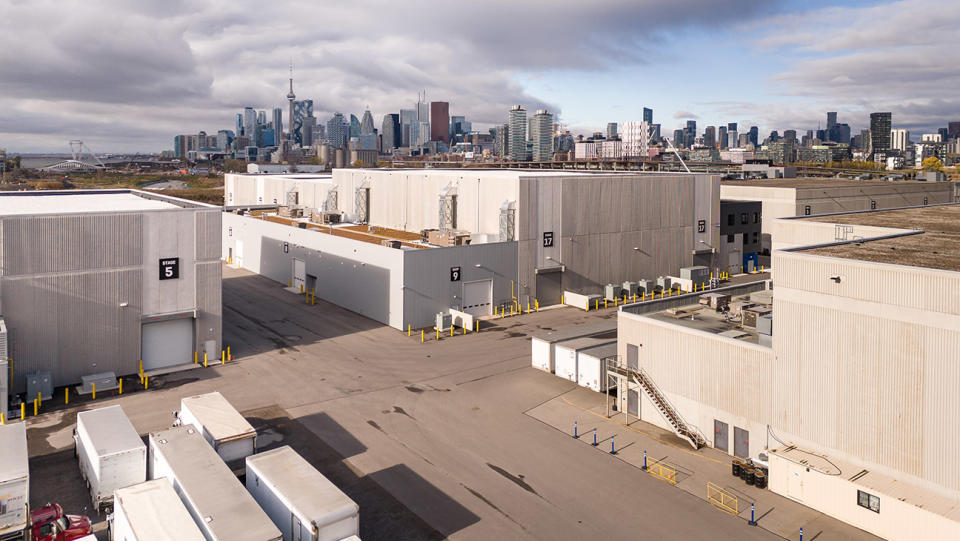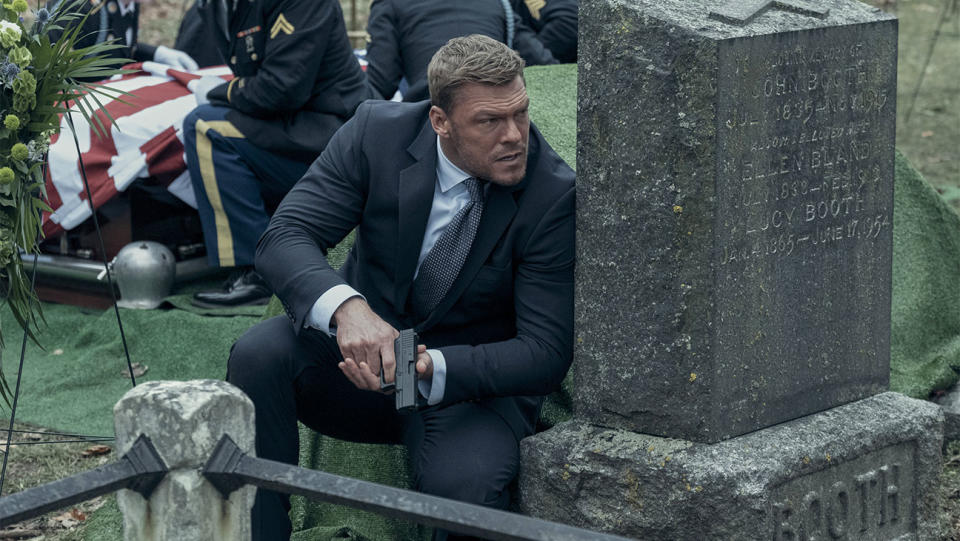Ontario Hoping for a Production Bounce Amid Hollywood Slowdown

Hollywood actors had barely inked a new labor deal with major studios and streamers last November when the lights in Ontario film studios flickered on and local talent and technical crews eyed a quick return to work on American shoots.
But the homecoming for Hollywood after the grueling SAG-AFTRA strike has hardly gone as envisioned in the Canadian province, which is known for doubling for U.S. locales such as New York, Boston, and Georgia. According to Ontario production insiders, the province that once defied gravity as a booming production hub for Hollywood has come back down to earth, with production slower than expected and lower budgets on projects that are filming there.
More from The Hollywood Reporter
Hong Chau Had COVID When Yorgos Lanthimos Came Calling With 'Kinds of Kindness'
Inside the Dior Beauty Suite at Cannes Where the Celebrity A-List Goes for Gala Glam
“It’s been a slower ramp-up in business than most anticipated. But we’re starting to see a pretty good increase in business, especially in the past few weeks,” says Garin Josey, chief operating officer of Sunbelt Rentals Film & TV, a major production equipment and soundstage supplier to Hollywood studios in Canada and the U.K.
Ontario’s film community is hopeful that the back half of 2024 will be far stronger than its first. “We do see our American producers and studios wanting to come back and work in Toronto because they know there’s good talent here. It’s tried and proven, and they have the dollar right [for exchange rate savings],” says Neishaw Ali, CEO and executive producer of Spin VFX, a major visual effects house in Toronto.
The slow return to work comes as two Toronto-shot titles compete for the Palme d’Or in Cannes: David Cronenberg’s sci-fi thriller The Shrouds and Ali Abbasi’s The Apprentice, which stars Sebastian Stan as a young Donald Trump. And a third Toronto-shot film, Guy Maddin’s political satire Rumours, will screen out of competition at the French seaside festival.

While insiders hope these films reflect what can be shot in Ontario, they know Hollywood studios and streamers are more budget-conscious than ever. American producers returning to Ontario are no longer splashing cash on eye-wateringly pricey originals like they did before the strikes.
“There’s more demand for studio spaces than there is for productions to go on location and shoot,” says Noël Phillips, general manager of Dufferin Gate Studios. She reports major studios and streamers are sometimes opting for cheaper shoots on soundstages than on location.
Dufferin Gate has booked the third season of Hallmark’s family drama The Way Home, a Netflix series and a CBS Paramount Star Trek series on its stages, and it is negotiating with major studios and streamers to lease space on a longer-term basis. In January, Amazon MGM Studios signed a lease for 160,000 square feet of new soundstages and office space at Pinewood Toronto Studios to establish a Canadian production hub.
“We’re seeing production companies consolidate their activities in stable, reliable, and highly creative jurisdictions like Ontario. A long-term lease like the one structured between Amazon and Pinewood is a sign of faith in our jurisdiction,” argues Justin Cutler, director of the Ontario Film Office at Ontario Creates, which markets the province to Hollywood.

Drew Brown, executive vp and head of TV production at Skydance Media, has two series shooting in Ontario: the third season of Reacher for Prime Video and season two of Fubar, the Netflix action-comedy series starring Arnold Schwarzenegger. Brown has used a host of locations across the city’s waterfront and the province. He cites generous tax credits and exchange rate savings as among the pluses for filming there. But its strengths go beyond the financial incentives, he says.
“Those are two big advantages,” Brown says, “but there’s also the wealth of production craftsmen and infrastructure. Toronto is a major international production hub and can house a number of big shows. Not many cities around the world can do that.”
Lisa Kussner, line producer on the Alan Ritchson starrer Reacher, says the source material (Lee Child’s Reacher books) allows for successive seasons to be shot elsewhere. Yet they aren’t. All three seasons so far have been shot in Ontario, and mostly outside of Toronto — and that’s because it can easily double for different regions of the United States.
“Season one was set in Georgia. Season two was set in New York and season three is set in Maine. And all three of those states, we can cover here. We have lakes, we have large cities, we have small towns, and so there are a lot of different looks and we can support a lot of different towns and cities,” Kussner tells THR.

As a leading indicator of the Americans returning to Ontario post-strikes, David Mintz, president of David Mintz Catering, says he’s back to preparing on-set meals for local American film and TV shoots at the pace he enjoyed before the actors strike. “By the end of May, we will be up to close to 100 percent of where we were pre-strike, which is good for us,” he reports.
Relief has not come as quickly for others, especially the visual effects houses that will feel the impact later, as they are on the back end of Hollywood’s production workflows. “It’s taking six or seven months. That’s why everyone is saying the ramp-up is really going to be in the third and fourth quarter,” Spin VFX’s Ali says of the recovery.
Some Ontario insiders worry about the province’s industry being inextricably bound to major studios and streamers for whom disruption has become a concerning trend, whether it be pandemic or strike-related shutdowns.
But Karen Thorne-Stone, president and CEO of Ontario Creates, sees the province bouncing back from the lasting impact of the U.S. strikes. “We have that firm foundation, that sense of stability. The pieces are coming together now — the human infrastructure, the physical infrastructure, and all the suppliers,” Thorne-Stone says.
In addition to Amazon MGM Studios, Netflix has its own long-term lease on stages at Pinewood Toronto Studios and elsewhere for its own local production hub and space to shoot Netflix series like Ginny & Georgia and The Umbrella Academy. “These shows create a real foundation for spending on labor and also infrastructure and help us grow our jurisdiction,” Thorne-Stone adds.

And despite industry headwinds, confident local indie producers are launching new ventures, including Michelle Mama and Bill Taylor, who are opening their boutique production company Gay Agenda, with a slate of feature films and scripted, factual TV and digital series aimed at gay audiences. “Big companies are struggling right now. So small companies like ours can really be nimble and focus on a smaller slate of projects that are uniquely positioned to survive market and labor disruptions,” Taylor says.
Industry players outside Toronto are looking to bring more American productions to their regions, especially in southern Ontario, as the major studios and streamers closely watch their expense lines. Indeed, savvy producers, whether local or foreign players, are figuring out ways to take even more advantage of tax savings that way.
“They come down here to Hamilton, an hour outside Toronto, and they shoot a few scenes and get an extra 10 percent back on their taxes,” says Zach Zohr, owner of Hamilton Film Studios. And unlike labor disruptions that rocked Hollywood last year, the good news is the Writers Guild of Canada has agreed to terms on a new deal with Canadian indie film and TV producers to herald continuing labor peace north of the border.
The Office writer Anthony Q. Farrell used the downtime during the Hollywood strikes to develop new TV series after he was showrunner on the sci-fi primetime comedy Overlord and the Underwoods and another comedy, the second season of Run the Burbs. “The business has slowed down, so you can see people are being more selective because there’s less money going to the broadcasters and they’re being very picky because they only have so much money,” Farrell tells THR.
“So it’s really about honing a lot of different ideas and helping to develop content and figuring out what the Canadian broadcasters and international broadcasters are looking for because so many funding models are tied to co-developments and co-productions,” he adds.
Best of The Hollywood Reporter

